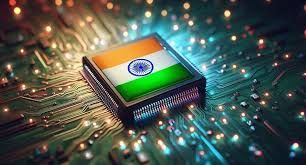India’s semiconductor market is projected to surpass $100 billion by 2030, driven by AI adoption, data centre expansion, and strategic tech sovereignty goals. Backed by the India Semiconductor Mission and global supply chain shifts, the country is rapidly evolving from a chip consumer to a credible manufacturing and design powerhouse.
From Importer to Innovator: India’s Chip Ambitions Get a $100 Billion Upgrade
India’s semiconductor sector is on a fast track to transformation. According to the latest government and industry estimates, the country’s chip market is expected to exceed $100–110 billion by 2030, up from $23 billion in 2023. This surge is fueled by AI integration, data centre proliferation, and a national push for digital sovereignty.
Key Drivers and Strategic Highlights:
India Semiconductor Mission Gains Momentum
With a ₹76,000 crore outlay, the India Semiconductor Mission (ISM) is incentivizing local chip manufacturing, design, and talent development.
The mission aims to reduce import dependency and establish India as a global semiconductor hub.
AI and Data Centres Fuel Demand
The rise of AI-powered applications, from language models to smart cities, is driving demand for high-performance chips.
India’s data centre market alone is forecast to attract $100 billion in investments by 2027, creating a robust domestic chip consumption base.
Geopolitical Tailwinds and Supply Chain Diversification
Global tensions, including US-China tech restrictions, are prompting companies to diversify chip supply chains, with India emerging as a strategic alternative.
India’s democratic governance and skilled workforce enhance its appeal to global chipmakers.
Design-Led Innovation and Talent Pool
India already contributes to 20% of global chip design talent, with firms like Intel, Qualcomm, and AMD operating major R&D centres.
The government is now pushing to convert this design strength into fabrication capability.
Sovereignty and Security at the Core
Chips are now seen as critical infrastructure, essential for national security, economic resilience, and digital independence.
India’s chip strategy aligns with broader goals of Atmanirbhar Bharat and tech sovereignty.
Challenges Ahead
Experts caution that infrastructure gaps, capital intensity, and global competition remain hurdles.
However, consistent policy support and public-private partnerships are expected to bridge these gaps.
India’s chip journey is no longer a distant dream—it’s a strategic imperative. As the world bets on silicon, India is betting on itself.
Sources: Economic Times, PIB
